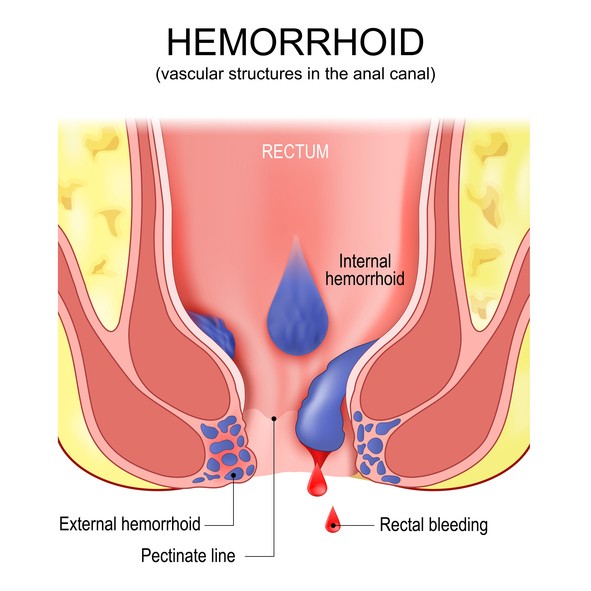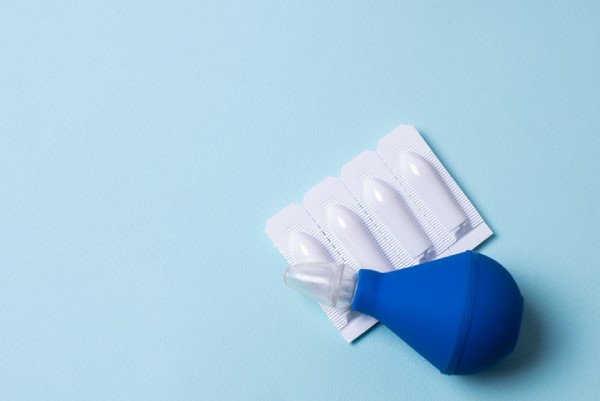Hemorrhoids, often referred to as piles, are swollen veins located around the anus or in the lower rectum. This common condition affects many people across the country, causing discomfort, pain, and often embarrassment.
Despite being a prevalent issue, many are unaware of how to treat hemorrhoids and the various treatments available. In this comprehensive guide, we will explore the symptoms, diagnosis, and different treatments for hemorrhoids, providing you with the knowledge needed to manage and alleviate this condition.
What Are Hemorrhoids?
Hemorrhoids are swollen blood vessels in the lower rectum and anus. They can cause significant discomfort and complications if not treated properly.
Hemorrhoids are categorized into two main types: internal and external. Understanding the differences between these types and their respective symptoms is crucial for proper management.
While prevalence is difficult to determine, with many not seeking care, the Canadian Digestive Health Foundation explains it’s estimated that 60 to 70 percent of Canadians will develop hemorrhoids in their lifetime, with at least 50% of people being over the age of 50.

What Causes Hemorrhoids?
Hemorrhoids develop due to increased pressure in the lower rectum.
This pressure can arise from various factors such as straining during bowel movements, sitting for prolonged periods, chronic constipation or diarrhea, and heavy lifting. Pregnancy is another common cause, as the growing uterus exerts pressure on the veins in the rectum.
Poor dietary habits, particularly low fibre intake, can also contribute to the development of hemorrhoids. A diet lacking in fibre leads to harder stools, causing individuals to strain more during bowel movements.
Furthermore, obesity and a sedentary lifestyle can increase the risk, as they often correlate with poor bowel habits and increased rectal pressure.
What Types of Hemorrhoids Are There?
Hemorrhoids are classified into three main types:
- Internal Hemorrhoids: These are located inside the rectum and are typically painless. However, they can cause bleeding during bowel movements.
- External Hemorrhoids: These develop under the skin around the anus and can cause significant pain and swelling.
- Prolapsed Hemorrhoids: These occur when internal hemorrhoids swell and extend outside the anus. They can be particularly painful and may require medical intervention.
Who Might Get Hemorrhoids? Risk Factors
Certain individuals are more susceptible to developing hemorrhoids. Risk factors include:
- Age: Hemorrhoids are more common in individuals over the age of 50.
- Family History: Genetics can play a role in the likelihood of developing hemorrhoids.
- Pregnancy: Increased pressure from the growing fetus and hormonal changes contribute to hemorrhoid formation.
- Diet: A low-fibre diet and inadequate fluid intake can lead to constipation, increasing the risk of hemorrhoids.
- Obesity: Excess weight puts additional pressure on the rectal veins, leading to hemorrhoids.
5 Symptoms of Hemorrhoids
Identifying the symptoms of hemorrhoids is essential for early intervention and treatment. The five most common symptoms include:
- Rectal Bleeding: Bright red blood on toilet paper or in the toilet bowl after a bowel movement.
- Itching or Irritation: Persistent itching around the anus.
- Inflammation: Swelling and inflammation around the anus.
- Swelling or Hard Lumps: Noticeable lumps near the anus, which can be painful.
- Pain or Discomfort: Discomfort, pain, or soreness around the anal area, especially during bowel movements.
Diagnosing Hemorrhoids
Proper diagnosis of hemorrhoids is crucial to determine the appropriate treatment plan. There are several methods healthcare providers use to diagnose this condition:
- Visual Inspection: External hemorrhoids can often be diagnosed through a visual examination of the anal area.
- Rectal Exam: A healthcare provider inserts a gloved, lubricated finger into the rectum to feel for abnormalities.
- Anoscopy: A small, tubular instrument called an anoscope is inserted into the rectum to provide a clear view of the anal canal. According to the Cleveland Clinic, this is a simple bedside procedure.
- Sigmoidoscopy: This procedure involves using a flexible tube with a light to examine the lower part of the colon.

How to Treat Hemorrhoids – 9 Treatment & Home Remedies to Manage Piles
There are numerous ways to manage and treat hemorrhoids effectively. Below are nine practical methods to alleviate symptoms and promote healing:
1. Eat More Fibre or Take Fibre Supplements
The first line of care typically involves increasing your fibre intake to help soften stools and reduce straining during bowel movements.
The Canadian Digestive Health Foundation recommends at least 25 grams of fibre per day to promote healthy bowel movements and prevent constipation.
Incorporating more high-fibre foods such as fruits, vegetables, whole grains, and legumes into your diet is a great way to increase your fibre intake. If dietary changes are insufficient, fibre supplements like psyllium husk or Metamucil may be beneficial.
Remember, even for natural supplements, it’s important to discuss them with your pharmacist first to ensure they are suitable for your unique needs.
2. Drink More Water and Stay Hydrated
Proper hydration is essential for maintaining soft stools. Drinking plenty of water throughout the day can help prevent constipation and reduce the strain on hemorrhoids.
If you struggle to drink plain water, opt for sugar-free flavoured water. This can make staying hydrated easier.
3. Soak in a Warm Bath
Soaking the anal area in warm water for 10-15 minutes several times a day can provide relief from itching, pain, and inflammation. This method, known as a sitz bath, can be particularly soothing after bowel movements.
4. Use Soothing Wipes
Using moist towelettes or wipes instead of dry toilet paper can help minimize irritation. Products like Tucks Cleansing Wipes, Anusol Cleansing Wipes, and Preparation H Soothing Wipes are designed to provide gentle cleansing and soothing relief.
5. Do Moderate Aerobic Exercise
Regular physical activity, such as walking or swimming, can improve bowel function and reduce the risk of constipation. Exercise helps stimulate bowel movements and reduce pressure on the rectal veins.
6. Apply a Cold Pack on the Tender Area
Applying a cold pack or ice wrapped in a cloth to the affected area can help reduce swelling and numb the pain. Use this method for 10-15 minutes at a time to achieve relief.
7. Apply Specific Ointments, Creams, or Lotions
Over-the-counter ointments and creams, such as Preparation H, Anusol, and Anusol Plus, can provide temporary relief from pain and itching. These products often contain ingredients that reduce inflammation and soothe the affected area.
These products are also available in suppositories, however, the efficacy of this is questionable, as suppositories treat deeper tissue in the anal canal. Not only are hemorrhoids closer to the outside of the canal, but internal hemorrhoids don’t hurt, making ointments the more effective route of treatment.
8. Apply OTC Medications to the Infected Area
Certain over-the-counter medications, like Hemovel and Venixxa, can help manage hemorrhoid symptoms. Availability may vary, so it’s essential to check with your local pharmacy for these treatments.
In some provinces, hemorrhoids are considered a minor ailment which your pharmacist may be able to treat, providing prescriptions for more effective treatment. This may include:
Speak to your local PharmaChoice pharmacist to learn more about the minor ailments they provide support for, or explore services provided in your province through our online portal.
9. Take NSAIDs for Pain and Inflammation
Nonsteroidal anti-inflammatory drugs (NSAIDs) like ibuprofen or naproxen can help reduce pain and inflammation associated with hemorrhoids.
While these medications can be particularly useful when combined with other treatments, it’s important to remember many hemorrhoid-specific treatments also combat pain, so the addition of NSAIDS may not be necessary.
Hemorrhoid Medical Procedures – Surgical vs Non-Surgical Treatments
In some cases, medical procedures may be necessary to treat severe hemorrhoids. The Cleveland Clinic explains that if home treatments don’t work or symptoms get worse, doctors may recommend alternative surgical or non-surgical treatments. This can include:
Surgical Treatments
- Hemorrhoidectomy: This procedure involves the surgical removal of hemorrhoids. It’s typically recommended for severe cases or when other treatments have failed.
- Hemorrhoid Stapling: This surgical procedure uses a special device to staple and remove a portion of the hemorrhoid tissue.
Non-Surgical Treatments
- Coagulation: Techniques like infrared, laser, or bipolar coagulation can be used to shrink hemorrhoids by cutting off their blood supply.
- Sclerotherapy: This involves injecting a solution into the hemorrhoid to cause it to shrink and eventually disappear.
- Electrocauterization: This method uses electrical current to burn off hemorrhoid tissue.
- Rubber Band Ligation: A small rubber band is placed around the base of the hemorrhoid to cut off its blood supply, causing it to wither and fall off.

7 Hemorrhoid Prevention Tips
Preventing hemorrhoids is often easier than treating them. Here are seven tips to help prevent the occurrence of hemorrhoids:
- Avoid Sitting Too Long: Prolonged sitting can increase pressure on the rectal veins. Take breaks and move around regularly.
- Avoid Straining When Using the Toilet: Straining during bowel movements puts additional pressure on the rectal veins. Take your time and avoid forcing bowel movements.
- Drink Plenty of Water: Staying hydrated helps maintain soft stools and prevents constipation.
- Stay Physically Active: Regular exercise promotes healthy bowel function and reduces the risk of constipation.
- Eat More High-Fibre Foods: A diet rich in fibre can help prevent constipation and reduce the need for straining during bowel movements.
- Maintain a Moderate Body Weight: Excess weight can increase pressure on the rectal veins, so maintaining a healthy weight is crucial.
- Take Laxatives or Use Enemas (as recommended by your healthcare provider): These can help manage constipation and reduce strain during bowel movements.
When To Contact a Doctor
While you should be speaking with your healthcare provider at the first sign of hemorrhoids developing, it’s essential to seek medical attention if you experience any of the following symptoms:
- Fever: A sign of infection that requires prompt medical evaluation.
- Severe Pain: Persistent or severe pain that interferes with daily activities.
- Persistent or Heavy Bleeding: Continuous or heavy bleeding that does not improve with home treatments.
- Pus Leaking from Hemorrhoids: Indication of an infection that needs medical intervention.
- Increased Itching at Night: This can be a sign of pinworms, which will need to be diagnosed and treated by your family physician.
Potential Hemorrhoid Complications
While hemorrhoids are generally not life-threatening, they can lead to complications if left untreated. Some potential complications include:
- Blood Clots: Thrombosed hemorrhoids occur when a blood clot forms inside a hemorrhoid, causing severe pain and swelling.
- Anemia: Chronic bleeding from hemorrhoids can lead to anemia, characterized by fatigue and weakness.
- Infection: Hemorrhoids can become infected, leading to further pain and complications.
- Skin Tags: Skin tags can develop from healed external hemorrhoids, which may cause hygiene issues.
- Strangulated Hemorrhoids: This occurs when the blood supply to a prolapsed hemorrhoid is cut off, leading to severe pain and potential tissue death.

Find Effective Hemorrhoid Treatment at Your Local PharmaChoice
Managing and treating hemorrhoids requires a comprehensive approach that includes dietary changes, lifestyle modifications, and appropriate medical interventions.
By following the tips and treatments outlined in this guide, you can effectively manage hemorrhoid symptoms and improve your quality of life.
For personalized advice and treatment options, consult your healthcare provider at your nearest PharmaChoice pharmacy. Together, we can help you find the right solutions for your hemorrhoid concerns.



